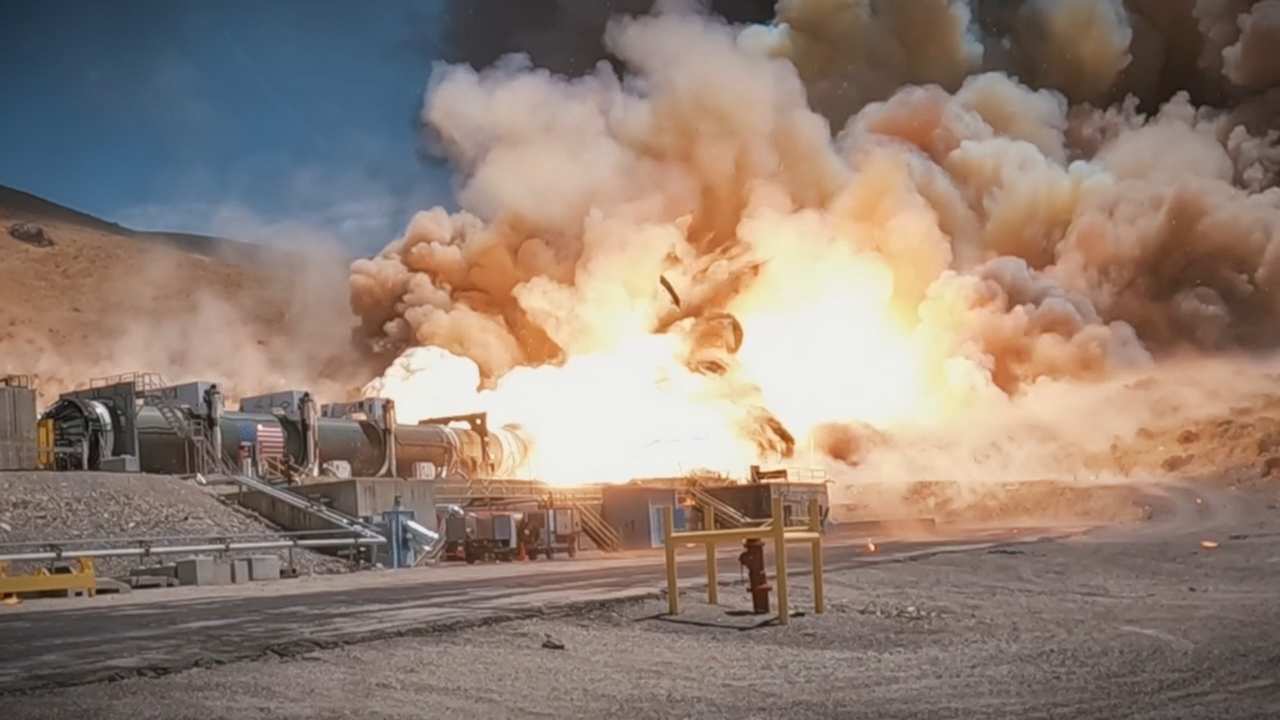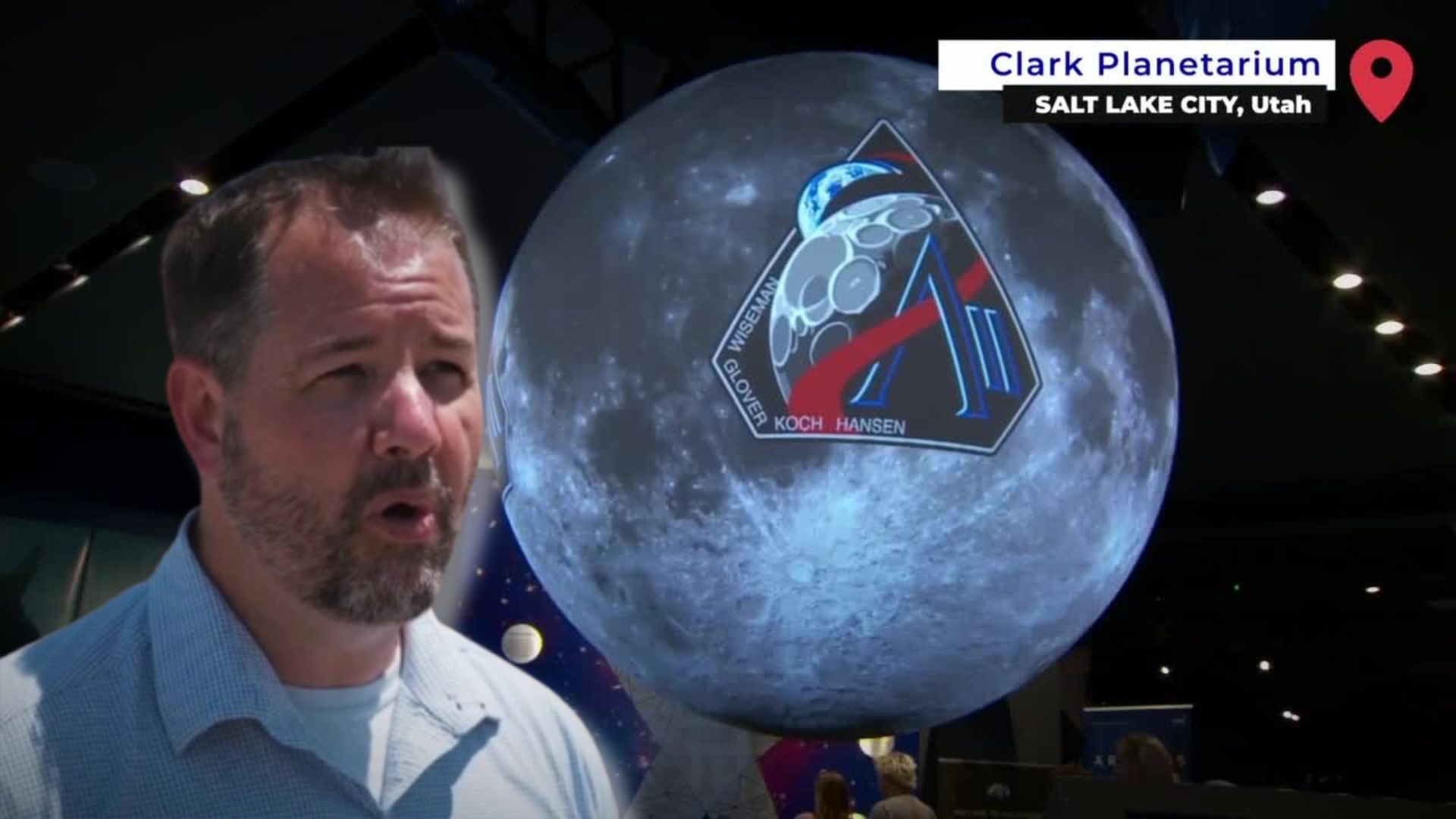SALT LAKE CITY — Fifty-five years ago today, the world was looking up as astronauts from Apollo 11 blasted off from the moon to return after a successful mission.
However, what you might not know is that fifty-five years later, Utahns are paving the way for a return back to the moon with ingenuity and drive to again capture the hearts and minds of the world.
Reading headlines in old newspapers across the country can give you a sense of the awe and wonder the world had as Neil Armstrong, Buzz Aldrin, and Michael Collins attempted what had never been done before.
“Astronauts Pit Technology Against Perilous New World” and “Moon Walkers First Steps Full of Danger” were just a few of the headlines in what would be the first draft of history.
Kjell Lindgren, the Acting Director of NASA's Flight Operations Directorate, said, "As a civilization, we've looked at the moon, dreamed about the moon." Dave Reynolds, the SLS Booster Program Manager at NASA's Marshall Space Flight Center, added, "Exploration is in our blood.”
In 1961, Lindgren recounted, "We hadn't even put anybody in orbit; we had merely launched a couple of suborbital flights, and he and the President challenged us to go to the moon and to come home." He continued, "And we made that dream come true. We sent astronauts to that lunar surface. That was such a uniting event for not just the United States, but for all of humanity.”
However, the headlines about lunar steps have not seen the light of day in over fifty years.
Even at that time, papers asked an important question. “Moon Explorers are Home What’s Next Step In Space?” One paper asked?
Well, 50 years after Apollo 17 last left the moon, it's time to go back. Lindgren said, "We've made an incredible amount of progress over the past 60 years, and we are on the cusp of something very special.”
Before we ever set foot on the moon again, we need Utah.
On the hillside on the west side of the Salt Lake Valley sits a facility steeped in history and innovation.
Mark Pond, Senior Director of NASA programs at Northrop Grumman, stated, "We have been building boosters for the Space Shuttle Program since the late 70s." Pond, who was an infant when astronaut Gene Cernan stepped off the moon in 1972, shared, "I feel completely cheated that I didn't get to be a part of that.”
Pond and many others have been involved in building solid rocket boosters right in our backyard, and they invited us for a special look at those ready to blast off.
Sitting in one of the hundred buildings on the property are several rocket motors ready to go. The include several for the United Launch Alliance with those showing us around explaining, “The motors that you've got over here are the GEM 63’s. The GEM 63 XLS are used on the Atlas V rocket, and the GEM 63 XLS support the Vulcan vehicle.”
These motors are great for getting to space, but if it's the moon you want to go to, you only need to travel a little further north to Northrop Grumman's Promontory facility. Pond said, "Northrop Grumman builds two major components for Artemis: the two white solid rocket boosters on the sides of the SLS stack and the launch abort system.”
Currently, they are preparing for launch with the segments of the SRB’s (Solid Rocket Boosters) and the stack preparing for a early spring 2026 launch time for Artemis II. "We shipped the hardware to the launch site about a year and a half ago," Pond noted.
Another person prepping for launch is Dave Reynolds, a native Utahn who has looked to the stars since he can remember.
"The first experience that I can really remember that was related to space and space travel was when I was in second grade, and my teacher wheeled in a TV and the class watched the Space Shuttle Challenger," he recalled. While the disaster impacted everyone, Reynolds added, "there was something about the bravery of those astronauts and being willing to give their lives to explore that sparked something in me as a kid.”
Today, Reynolds no longer lives in Utah even if his heart is still here since he is currently the SLS Booster Program Manager at NASA's Marshall Space Flight Center.
So, what can an SLS booster do? Reynolds explained, "As the most powerful segmented solid rocket ever produced,” it packs quite a punch.
He continued, "You see the light from the motor. It's silent for about the first three or four seconds, and then it hits you, and it just rumbles your bones for two minutes. I guarantee they heard it from miles and miles around.”
This was the test of the BOLE DM-1, the new version of the SLS motor in its testing phase.
Read more about that test here:

NORTHERN UTAH
Utahns build, test largest NASA rocket ever produced in Promontory
Reynolds noted, "This rocket, the SLS Rocket, is the only rocket capable of sending the Orion capsule to the moon.”
A truly inspiring sight, and few know more about how inspiring it is than Kjell Lindgren.
He shared, "I have the privilege of serving as a NASA astronaut. I flew to the International Space Station in 2015 and then, more recently, had the privilege of commanding the Crew-4 mission to the International Space Station on a SpaceX Crew Dragon.”
As an astronaut, Lindgren now heads NASA's Flight Operations Directorate. "I wanted to be an astronaut for as long as I can remember. Most of us that are involved in human space flight were inspired by the images of our Apollo astronauts exploring the lunar surface.”
Soon, four brave souls will again push the boundaries of what is possible.
Reid Wiseman (Commander), Victor Glover (Pilot), and Christina Koch (Mission Specialist), along with Canadian Space Agency astronaut Jeremy Hansen (Mission Specialist) will soon take a trip around the moon as a final proof of concept for the SLS and Artemis missions, paving the way for Artemis III where humans will again set foot on the moon.
So soon headlines again will read “Mankind Walks on Moon” with Utah powering the way to inspiring Billions.
Reynolds stated, "This is the reason why the Artemis program exists: to inspire the next generation."
In closing Lindgren said, "We can all look out at the stars, and it inspires in every one of us a curiosity." He concluded, "I absolutely think this is the Golden Age of Space Travel."




